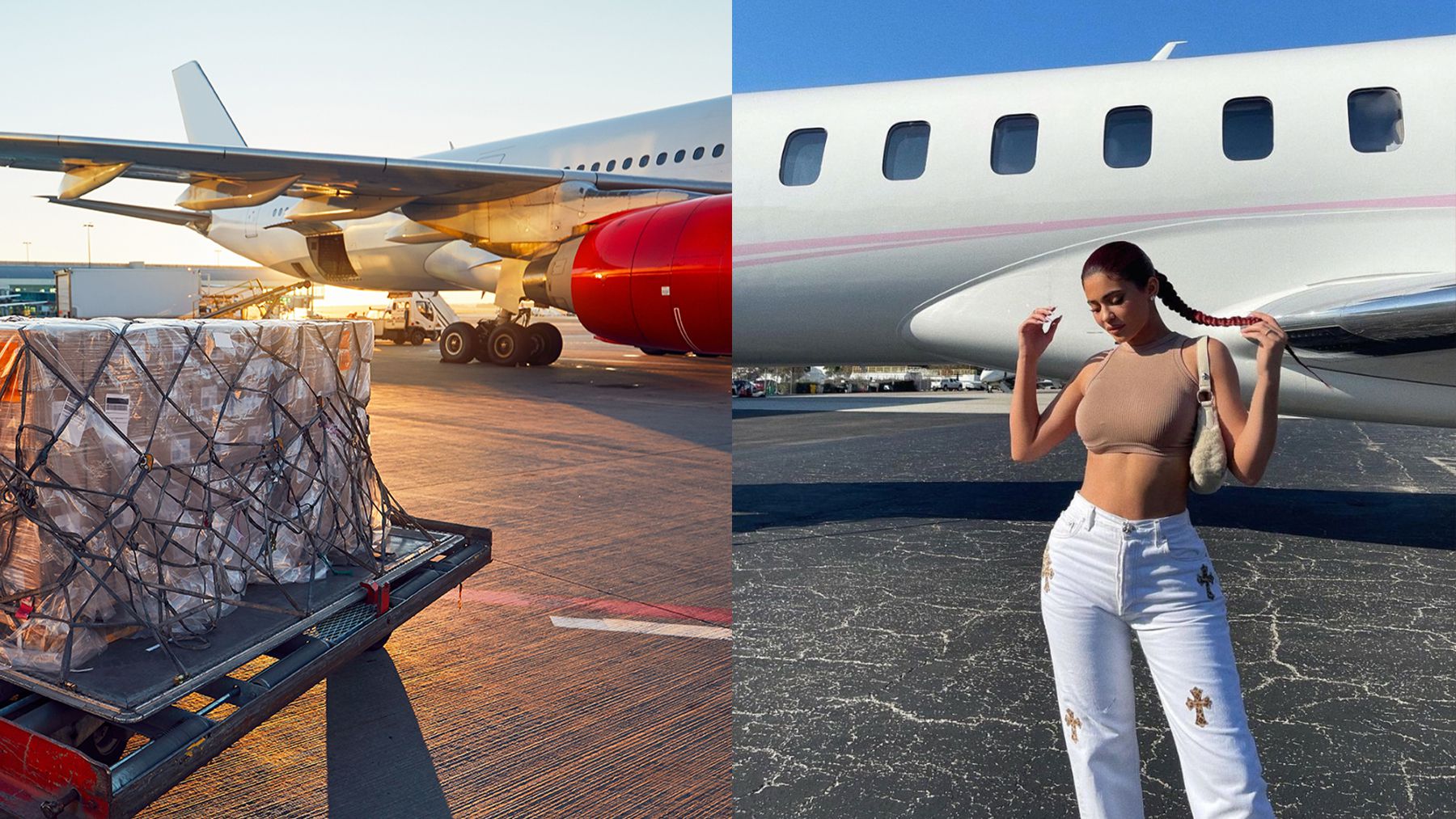
Reality TV and beauty mogul Kylie Jenner is used to making the news for her high-glamour, jet-setting lifestyle.
But when “The Kardashians” star shared a snap of herself and her partner, rapper Travis Scott, standing between two private jets with the caption “you wanna take mine or yours?” last month, it set off a firestorm of criticism. The journey in question lasted just 17 minutes, according to an automated Twitter account that tracks celebrity flights, fuelling an uproar over careless use of gas-guzzling airplanes that has expanded to embroil other stars like Drake and Taylor Swift.
The issue has spent weeks in the news cycle, with outrage stoked by the global weather extremes this summer that have served as increasingly visible signs of the climate crisis.
Just like celebrities, the fashion industry is hooked on flying in pursuit of convenience and speed.
The proportion of clothes, shoes and textiles shipped by air has roughly doubled over the last decade to 17 percent of the total, according to a 2020 report by consultancy McKinsey & Co. and advocacy group Global Fashion Agenda (GFA).
That comes at a heavy environmental cost; flights are the most carbon-intensive means of moving goods around the world. Air freight was responsible for nearly 6 percent of shipping emissions in 2019, despite accounting for less than 1 percent of tonnage, according to the OECD’s International Transport Forum.
As fashion continues to speed up, can brands make the trade-off to slow down their shipping?
A shift from polluting air transport doesn’t seem likely any time soon. Air freight gained ground during the pandemic, serving as a reliable shipping option when sea ports were backed up and shipping containers scarce. It’s also the fastest way to get goods from factories to warehouses, allowing brands to respond to shifting trends with more flexibility, a big bonus during the current climate of economic uncertainty. And fashion is simply getting faster, fuelled by new data-driven business models like Shein’s.
Air cargo volume is expected to grow around 4 percent year on year in 2022, up 12 percent from pre-pandemic levels in 2019, according to the International Air Transport Association.
To be sure, transport only accounts for around 3 percent of fashion’s overall greenhouse gas emissions, according to the McKinsey and GFA analysis. But moving away from flying and slowing fashion’s supply chain is a relatively straightforward and cost-effective fix brands can do today.
Slowing down may feel like a risk, but some brands are already experimenting with ways to bring consumers along on the journey, explaining the environmental benefits and offering the option to pre-order or select slower shipping methods.
More action on this front could immediately and meaningfully reduce brands’ emissions.
For more BoF sustainability coverage, sign up now for our new Weekly Sustainability Briefing by Sarah Kent.


